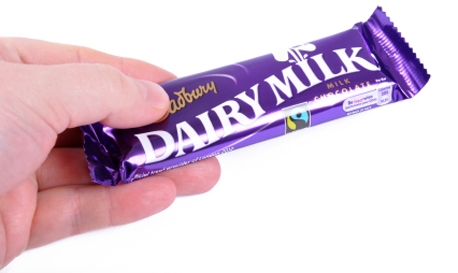OPINION11 October 2012
All MRS websites use cookies to help us improve our services. Any data collected is anonymised. If you continue using this site without accepting cookies you may experience some performance issues. Read about our cookies here.

OPINION11 October 2012
Could Cadbury’s claim to a shade of purple set a new precedent for how design research works? Stuart Chapman of The Big Picture contemplates the impact of a recent High Court ruling.
The case was noticeable for showing just how crucial design research is to brands. The reason is that colour is at the crux of the inherent power of design. It plays two key roles in branding – firstly as an identifier, and secondly as a communication vehicle.
As Barry Schwartz’s Paradox of Choice told us almost a decade ago, increased choice creates consumers who want to stick to the brands they know. What we see is that vast choice produces consumers who are increasingly reliant on visual elements like colour to identify ‘their’ brand amid the visual cacophony of supermarket shelves.
Behavioural research methodologies – in which we explore the effect of design in a simulated shopping context – have revealed that colour is consumers’ number one means of identifying brands. It’s for this reason that it can be extremely damaging when a brand’s colours are ‘borrowed’ by a competitor. Consumers typically shop on autopilot – so when rival packs mimic a brand’s ‘trade dress’, this often leads to shopper confusion.
As a communicator, colour can be used to convey a brand or product’s values. This is one of the facets that we uncover with pre-design research, which is geared towards understanding how brands’ equities are working in the here and now, how they live in consumers’ minds, and how they can best be developed.
While interpretations of what colours mean can vary somewhat by culture and market, they tend to be a simple means of communicating a message that more easily crosses international borders than other graphic elements.
This is something we saw when we conducted global research for the new Dulux identity – a brand that’s present in over fifty global markets. The identity’s multi-coloured ‘flourish’ transcended cultural differences in how consumers relate to decorating, and united them with a single, simple, global message: the joy of colour.
Successful brands know the potent power of design, which is why Cadbury took legal action to defend one of its core equities. There can be no doubt that purple is at the heart of consumers’ associations with the brand after almost 100 years of its use both on-pack and above the line.
“If Cadbury can own purple, can Green Giant own green (which is key to naturalness) in ambient vegetables? Can Lynx own black (which signals masculinity) in male deodorants?”
But while defending against copycat brands that aim to leech off leading brands’ status is a positive thing – there’s less confusion for consumers, and brands get the rewards for their investment – the case for the defence of colour trademarking becomes a little murkier around colour communications.
Many brands will want to communicate similar values about their product – like indulgence in chocolate, for instance. And if that value is best conveyed via a particular colour – like purple – then it gives a brand a huge (and arguably unfair) advantage if they are the only ones legally entitled to use it.
So if Cadbury can own purple (or a shade of it, Pantone 2685C) can Green Giant own green (which is key to naturalness) in ambient vegetables? Can Lynx own black (which signals masculinity) in male deodorants?
The bigger concern is, where is this heading?
There is a risk that imposing design constraints on brands will stifle creativity. And if that impacts on competition, then ultimately it is consumers who suffer. So while we can entirely understand brands wanting to defend the equities they’ve spent time and money building up, we’d rather see them defend themselves through great design than via the courts; by creating design that’s so distinctive and memorable that it can’t be easily imitated.
And while there’s no quick-fix guide as to how to do that, our advice is for brands to put their faith in the creative process – today’s successful brands are those that have invested in design. Using research to guide the creative process strategically from the start will help your brand forge and defend its place in the market.
In short, give the green light to creativity. Backed-up with solid consumer insight, it might help your brand avoid ending up in the dock.
Stuart Chapman is research manager at international design research agency The Big Picture
0 Comments